This post covers visiting the Crown Jewels in the Tower of London, including what they are, where they are kept, and, how you can get tickets to see them.
You can skip this post and purchase tickets to the Tower of London and Crown Jewels here.
TICKETS FOR THE CROWN JEWELS
Access to see the Crown Jewels is included with a ticket to the Tower of London.
You can also purchase a tourist pass and use that to enter without waiting in line for tickets.
In particular, the London Pass and the Explorer Pass offer a cost-effective way to visit the Crown Jewels and skip the queue.
- Adults: £29.90 | Concession: £24
- Children (5-15): £14.90 | Under 5: FREE
- Pre-purchase tickets to skip the queue
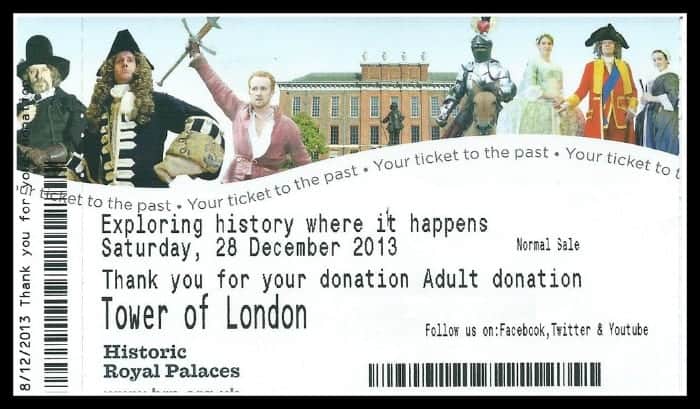
EARLY ACCESS TICKETS
If you're planning to take a tour of the Tower of London, it's worth noting that tickets are included with some outings from Take Walks.
One of their more popular options is a tour which includes early access to the Crown Jewels, allowing you to avoid the lines and get in before everyone else!
Early Access Tower of London Tour
- £74/Adults | £69/Children
- Duration: 2 ½ - 3 hours
- Hours: 8:30 am
- Includes early entry to the Tower of London.
- Includes first entry to the Jewel House.
- £129/Adults | £119/Children
- Duration: 8 hours
- Hours: 9 am
- Includes Tower of London admission.
- Includes Westminster Abbey admission.
- Includes a Thames River cruise.
DISCOUNTS
This section will cover all the best ways to save money on tickets to the Tower of London and the Crown Jewels, including details about discount sites and tourist passes.
1. Use a Tourist Pass
Several London tourist passes include admission to the Tower of London and the Crown Jewels at no additional cost.
These services typically offer access to dozens of attractions and activities for one low price, allowing you to save 50% or more off standard ticket prices.
Currently, the following passes provide tickets to this attraction:
If you want to learn more about how these services work, make sure to read our full post covering London tourist passes.
2. Combo Packages
If you're planning to visit multiple attractions in London, these combo deals provide a discount on tickets for the Tower of London and one other activity or landmark.
Tower Bridge + Tower of London
- £41.30/Adults | £20.60/Children (5-15) | £32.60/Concessions
- Includes admission to the Tower of London and Crown Jewels
- Includes admission to the Tower Bridge Exhibition
- Purchase tickets or learn more.
- £52.11/Adults | £38.61/Children (5-15) | £46.80/Concessions
- Includes admission to the Tower of London and Crown Jewels
- Includes admission to the Shard Observation Deck
- Purchase tickets or learn more.
- £76.86/Adults | £57.85/Children (5-15) | £71.25/Concessions
- Includes admission to the Tower of London and Crown Jewels
- Includes admission to the London Eye
- Purchase tickets or learn more.
Tower of London + Kew Gardens and Palace
- £46.93/Adults | £18.91/Children (5-15)
- £39.43/Concessions | £36.96/Students/Youth (16-29)
- Includes admission to the Tower of London and Crown Jewels
- Includes admission to Kew Gardens and Palace
- Purchase tickets or learn more.
Tower of London + Queen's Gallery
- £44.56/Adults | £22.71/Children (5-15) | £38.95/Concessions
- Includes admission to the Tower of London and Crown Jewels
- Includes admission to the Queen's Gallery
- Purchase tickets or learn more.
3. Use a Discount Site
There are several websites like Discount London and Groupon that frequently offer deals on tickets for local activities and attractions, including the Tower of London and the Crown Jewels.
In addition to their already low prices, these services usually also offer extra coupon codes to help you save even more money!
4. 2 For 1 Deal
If you're planning to use the National Rail to get around, you might be able to save a lot of money on tickets to the Tower of London.
Find out more about the 2-for-1 deal or learn how to take advantage of this discount.
5. Family Tickets
Families planning to visit the Tower of London will want to take advantage of the family ticket options:
- £52.20/Family (1 Adult, 2-3 Children)
- £82.10/Family (2 Adults, 2-3 Children)
- Purchase Family Tickets or learn more.
6. Tower Hamlets Resident Discount
If you live within the borough of Tower Hamlets and you have an Idea Store card or library card, you can visit the Tower of London for only £1.
Check our post on the Tower of London for more Discount options!
PLAN YOUR VISIT
There are a lot of details to consider before going to see the Crown Jewels.
This section will provide information about the best times to visit, how to get here, and what to expect.
For more details, make sure to read our post about visiting the Tower of London.
Summer Hours (June 1st – September 18th)
- Daily
- 9:00 – 17:30 (5:30 pm)
Winter Hours
- Tuesday – Saturday
- 9:00 – 16:30 (4:30 pm)
- Sunday/Monday
- 10:00 – 16:30 (4:30 pm) *last entry at 4 pm
Best Times to Visit
Some visitors recommend getting there as early as possible and heading straight to the Crown Jewels.
Due to their popularity, the only way to ensure you won't be waiting in line for a while is to get there while the crowds are still relatively small.
Consider arriving at the Tower of London right when it opens and doing your best to see this attraction between the hours of 9 am - 10 am.
To save time, consider an early bird tour that gets you into the Tower of London and the Crown Jewels before the general public.
Several guests also indicate you'll run into fewer crowds during weekday mornings than during the weekend.
They also note that weather can play a factor, as people are far less likely to visit the Tower of London on a rainy day than when the sun is out.
What to Expect
Most people who choose to visit the Tower of London will spend at least 15-30 minutes in line waiting to see the Crown Jewels.
Plan on setting aside at least 45-60 minutes for the entire experience.
Many visitors recommend setting aside at least 3 hours to see the entirety of the Tower of London.
Several guests note that even that might not be enough time for everything, so prepare for the possibility that you will spend up to 5 hours at this landmark.
To save time, consider an early bird tour that gets you into the Tower of London and the Crown Jewels before the general public.
Please keep in mind that you will not be able to take any photographs while visiting the Crown Jewels. Cameras are strictly forbidden and visitors are not allowed to take pictures.
Be aware that guards may try to stop you if any attempt is made to use a camera or snap a shot of this exhibit.
WHAT ARE THE CROWN JEWELS?
One of the most enduring symbols of Monarchy, and the centrepiece of the Royal Collection, in the United Kingdom is the Crown Jewels and no visit to London should be undertaken without a visit to see this most stunning of collections.
The Jewels have been available for the public to observe for centuries and millions have traveled from around the world just to see these most remarkable creations.
More than just a collection of crowns, the Crown Jewels actually encompass present and past crowns belonging to Sovereigns, Consorts, and Princes of Wales, scepters, rings, swords, orbs, spurs, robes, bracelets, and gold and silver plates!
The ceremonial and symbolic objects used during the coronations of British Kings and Queens are collectively known as the Regalia.
Not just used for their beauty, these are the most treasured and revered items in the Crown Jewels, as these are the pieces that are used in the centuries-old coronation ceremonies.
The Jewels are the most powerful symbols of Monarchy, although technically they do not belong to the royal family but to the nation - and they hold both cultural and religious significance.
It is lucky that the jewels are on display today as throughout their history they have variously been lost (by King John in 1216), used as collateral (by Edward III in the 1370s), pawned (by the wife of King Charles I in the 1640s), broken down and sold during the English Civil War (by Oliver Cromwell), and nearly stolen (by Colonel Thomas Blood in 1671)!
The majority of the pieces on display today date from the 17th century.
In 1660 King Charles II had a new set of Royal Regalia made – the ones on display today – however, there is one artifact that dates from before this time: the 12th century Anointing Spoon (sometimes referred to as the coronation spoon) – still used in coronation ceremonies today.
When Charles commissioned the Crown Jewels, he spent the princely sum of £13,000.00 (around £1 million in today’s money).
He also spent a further £18,000 to create a set of banqueting plates and a golden altar, as well as a baptism font.
There are actually two baptism fonts held at the Tower of London today.
The first is the original commissioned by King Charles II but the second dates from the reign of Queen Victoria.
King Charles II is particularly notable for his string of mistresses and illegitimate children, many of whom he officially acknowledged and had baptised in the royal font.
Queen Victoria, a staunchly conservative woman, refused to have any of her children baptized in the same font as Charles II’s ‘bastards’ so she insisted that a new one, known as the Lily Font, be created just for her family!
Historically, the Jewels were kept behind bars and visitors were able to put their hands through the railings and touch the Jewels! Today, of course, such easy access to the Jewels is strictly prohibited.
Visitors to the Tower wishing to see the Crown Jewels will find them in the Jewel House currently in use, dating from 1994.
Visitors enter through vault doors containing electronic beams and steel shutters. The vault doors are said to be able to withstand a nuclear bomb blast!
All the jewels on display are resting on French velvet, and are kept behind 2in (51mm) thick shatter-proof glass and filtered air circulates in the cases that hold the Jewels.
Scotland
Note that Scotland has their own Crown Jewels, kept at Edinburgh Castle, known as the Honours of Scotland. The collection includes a crown (made for King James V), a sceptre and a sword of state. The Honours were sealed away somewhere inside the castle after the union of Scotland and England and, eventually, their whereabouts were forgotten. They were uncovered in 1818 by Sir Walter Scott.
Ireland
At one time, there were state Jewels of Ireland but these were stolen in 1907 and never recovered.
The following list highlights the most famous pieces of royal regalia, explaining what they are and how they are used.
St Edward’s Crown

Dating from 1661, and considered the principal piece of the Regalia, this is the crown that is worn at the moment the monarch is crowned in Westminster Abbey.
The crown is named after Edward the Confessor and its’ last usage was at the coronation of our current King Charles III in May 2023.
This is the crown used as a symbol by the King and is the one depicted in coats of arms, badges, money, and other insignias (including the side of our famous red telephone boxes!) throughout the entire Commonwealth.
Weighing nearly 5 lbs, Queen Victoria chose not to be crowned with St. Edward’s because of the weight!
The Imperial State Crown
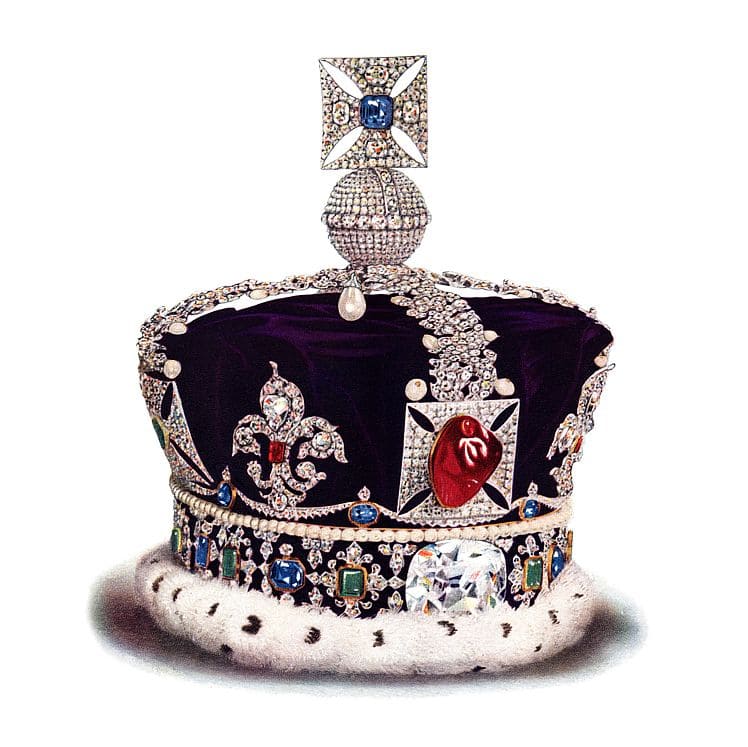
This is easily the most famous piece of the Crown Jewels.
The Imperial State Crown dates from 1937 and is still used today – this being the crown that the Sovereign wears each year at the State Opening of Parliament.
The Crown consists of a purple velvet cap with an ermine border and holds 2,868 diamonds, 273 pearls, 17 sapphires, 11 emeralds, and 5 rubies.
The Crown famously is also home to Cullinan II (a cut of the largest diamond ever found at 3,106 carats and cut into 9 different pieces!), St. Edward’s Sapphire (thought to date from 1042), and the Black Prince’s Ruby (thought to date from the 14th century and weighing in at 170 carats).
The Crown of Queen Elizabeth, the Queen Mother
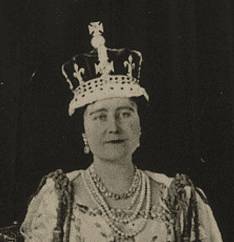
Made for Queen Elizabeth, the wife of King George VI in 1937 (our current King’s grandparents), the Crown of Queen Elizabeth was the first crown for a British consort made out of platinum.
The arches on this crown are detachable so that it may be worn as a circlet instead (as she wore it during the coronation of Queen Elizabeth II).
It is set with 2,800 diamonds and holds the most famous diamond in the Royal Regalia: the Koh-i-Noor.
Previously the largest known diamond, originating in India and coming in at 793 carats uncut, visitors come from around the world simply to see this stunning diamond.
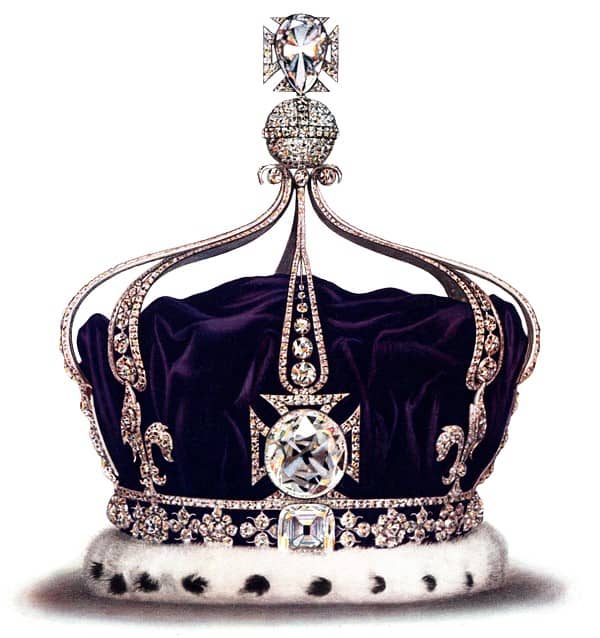
The Crown of Queen Mary
Originally created for Mary of Teck, wife of King George V, in 1911, the Crown of Queen Mary was designed to hold the previously mentioned Koh-i-Noor. Today, however, it contains Cullinan III, IV and V, in addition to 2,200 other diamonds. It has been used throughout the decades by various members of the royal family as a circlet.
It has been on display at the Tower of London since the death of Queen Mary in 1953. In 2023, the crown was partially altered and used for the coronation of Queen Camilla.
Sovereign’s Orb
The Sovereign Orb weighs 42 ounces, is surrounded by pearls and gemstones, and was made for the coronation of King Charles II in 1660.
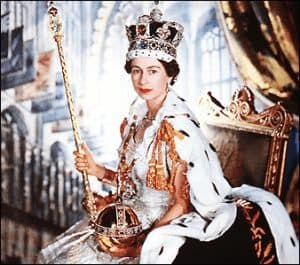
Symbolically, the Orb represents the Monarch’s role as Defender of the Faith and Supreme Governor of the Church of England.
The orb is placed in the Monarch’s right hand by the Archbishop of Canterbury during the coronation.
At the end of the ceremony, it is carried in the left hand, and in the right, the Sceptre [below] is held.
The Sovereign’s Sceptre with Cross
Also known as St. Edward’s Sceptre or the Royal Sceptre, this piece holds The Star of Africa, or Cullinan I, a second cut of the same diamond found in the Imperial State Crown that was set into place in 1910.
Cullinan I, gifted to Kind Edward VII by the Transvaal Government, is still the largest colourless cut diamond in the entire world, weighing in at 530 carats.
This gem can be removed from the sceptre and worn as a broach.
Click here for the official Crown Jewels website.
WHERE ARE THE CROWN JEWELS KEPT?
Guarded by Yeomen Warders, the jewels are kept in The Jewel House at the Tower of London, where this precious collection has been held since the 14th century.
We recommend using this Google map for directions to the Crown Jewels from anywhere in London.
The Tower of London is from the Tower Hill Underground Station, but it's also within walking distance from the Monument, London Bridge, and a few other stations.
The Tower of London is located adjacent to the Tower Bridge.
If you are considering purchasing a hop-on-hop-off bus ticket, keep in mind that all the major companies have stops at the Tower of London, and some offer discount combo tickets.
Read our post comparing London bus companies.
How to Find Them
The Crown Jewels are found at the Jewel House near the center of His Majesty's Fortress, The Tower of London landmark.
The building containing this attraction is located right next to the St. Peter Ad Vincula Royal Chapel and the Fusilier Museum.
Use the map below to orient yourself and find your way to this famous site.
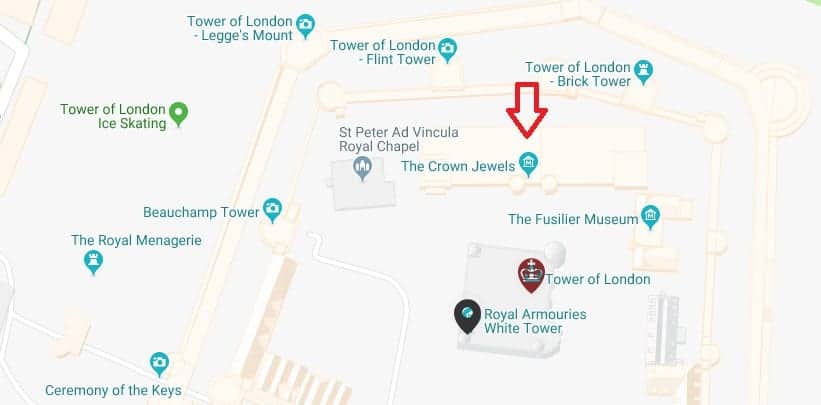
You also might be interested in:








